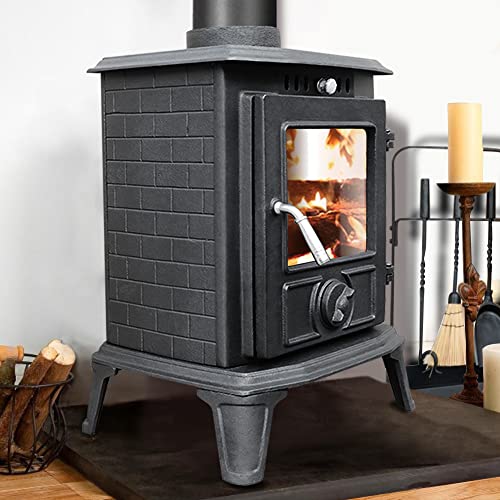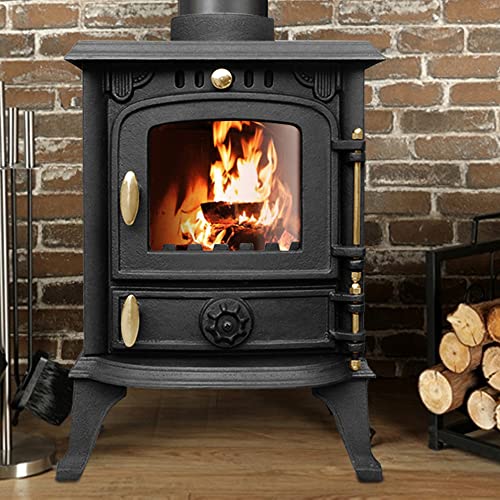So , You've Bought Stove Wood ... Now What?
페이지 정보
작성자 Herbert Lapine 작성일24-02-04 00:33 조회7회 댓글0건관련링크
본문
 How to Use a Wood Stove
How to Use a Wood StoveWood stoves are an excellent method of heating a home. The way you use your stove could affect its performance.
The center of the wood stove is typically the most hot area. This is where pots are placed. The bottom of the stove usually has a grate where the ashes fall.
Choosing the Best Wood
A wood stove is an important purchase as well as a long-term investment. Before you make that commitment you must know how the stove functions and how you can use it. This will allow you to maximize the heat output and reduce your heating cost.
The first step is deciding the best stove for your home or cabin. How much heat your stove requires will depend on the size of your space and how well-insulated your home is. The amount of heat required is measured in British thermal units, or BTUs. Newer homes generally require less energy than older homes because they are more insulated and have more energy-efficient features such as balanced heating and ventilation units.
Another important factor is choosing the correct wood for your stove. Different types of wood burn differently. The best wood to use for your stove is hard dense hardwoods. Softwoods burn quickly and produce very little heat, whereas hardwoods burn slowly over longer periods of time producing more heat. Avoid using pressure-treated lumber, varnished or painted wooden products or driftwood inside your fireplace. These materials can cause damage to your chimney and cause creosote buildup.
Once you've decided on the kind of wood you'd like to use in your stove, it's important to season it properly. You should season your wood for at least three years prior to the time you burn it. Dry wood burns more efficiently, generates more heat and produces fewer harmful byproducts.
Stove Shapes and Door Styles
The shape of the firebox also influences its performance. Stoves that are wider and deeper than others will be less visible in the room, but could have issues with smoke and airflow production. The front door of the stove is important to think about, as it will affect how easy it is for you to load logs and your view.
You should also think about the type of wood you'd like to burn, if you plan to make use of your stove for daily or long-term usage, and how often you will use it. Some people choose the wrong stove, which is large for their requirements, which leads to them operating it at an excessively high temperature every day. This causes lots of smoke, which can be dangerous to the indoor environment. It also leads to an excessive amount of creosote building up in the chimney.
Preparing the Firewood
A well-maintained wood stove can provide warmth and comfort in the winter. To make it efficient, it is important to properly use the stove and prepare it. To ensure that the firewood is burned cleanly in your fireplace and reduce the amount of creosote in your fireplace, you should dry your firewood before using it. Making firewood isn't a difficult task however, it requires some thought and a lot of effort.
Unseasoned or green firewood can result in smoky flames and poor airflow in your stove wood burning [just click the following page]. To avoid this, most people cut their own firewood from fallen trees or purchase an entire load from the local wood cutter. The quality of the wood will be contingent on when it was chopped and the length of time it was allowed to dry. A good rule of thumb is to cut the wood in the winter or early spring, and then let it dry through the summer.
You can use a moisture-meter or a simple test-by fire method to determine whether the wood is ready for your stove or fireplace. If the wood is properly seasoned you'll notice that it feels lighter in your hands and the bark will begin to fall off.
Another sign that the wood is ready for use is that it will ignite easily when thrown onto a hot flame and produce a good flame. It will also burn hotter and faster than wet or green wood, producing an even dusting of ash in the process.
Consider purchasing a face-cord of dry, split logs which are ready to use when they are delivered to your driveway. A face cord has approximately 128 cubic feet, including the space between each piece.
To speed up the process of seasoning it is recommended that you split your logs into a range of sizes that are suitable for your stove. It is preferential to cut logs into rounds or rectangles instead of cylinders. This will let them dry more quickly and evenly. The stacking of the pieces in a single row and exposing them to the sun and winds can also help as the sun warms and evaporates the water, while the wind carries it away.
Lighting the Fire
Wood stoves are the most eco-friendly option to heat our homes. They burn off waste gasses (called dioxins) and wood more efficiently. Wood stoves also incorporate the baffle plate, which helps to minimize the amount of smoke that is produced by a fire.
Stoves come with a variety of built-in features to help you create fires that last longer and require less maintenance than traditional open fireplaces. Modern stoves, for example come with valve controls to control the flow of air into combustion chambers. This ensures that the flame stays at a steady, controlled pace to generate more heat and lessen smoke emissions.
Modern stoves are also designed to be more efficient in terms of energy use heating systems. They employ a process referred to as secondary combustion to recycle the gases released from the combustion of outdoor wood burning stove into more heat. This process increases the heat output of the stove by a significant amount. It will also help keep the fire burning for longer.
A properly-fired log burner can make your home more cozy. The warmth and the comfort of a fireplace can be calming. Many people find sitting in front of it is a relaxing experience. It can be a great opportunity to spend time with friends and family.
To start a fire, you need the right kind of spark. Two tabloid-size pieces of crumpled newspaper laid on the top of a layer of tinder is a simple and effective method to light an fire. Some people utilize dry orange peels as a natural tinder to begin their fires.
After the newspaper is placed on top, small pieces of tinder and a couple of firelighters should be placed on the top. A well-lit fireplace should have a fire that is bright enough to ignite the newspaper but not hot enough to ignite the newspaper or start emitting smoke.
The addition of larger pieces of logs to the fire will help it reach its maximum potential and heat the room quickly. Based on the stove you have, it may be beneficial to utilize a chimney blower or fan to circulate the air in the room, and to prevent the heat from rising to the ceiling.
Cleaning the Firebox
Wood burning stoves produce smoke and toxins that need to be cleared from the hearth. Cleaning up ashes and wood debris is a normal part of running an efficient fireplace, however, regular cleaning should be followed by a thorough inspection for damage and deterioration to the hearth, chimney and firebox surfaces. It is recommended to delegate this kind of cleaning to professionals, who can do an extensive cleaning and inspection.
Before cleaning your firebox, be sure that you go over the manufacturer's instructions and the warranty. This will ensure that you do not break any specific cleaning guidelines. Think about laying a large tarp over the floor to collect any dirt or soot that may fall as you clean.
Start with a cool fireplace and take out the andirons grate, and ash dump (Image 1). Take the ashes from the firebox onto one side and scoop them with an iron spoon into a trashcan for disposal. Vacuum your mantle and hearth, removing any soot which tends to build up in the cracks and crevices.
If you have glass doors, you can clean them using Simple Green and a scrub sponge or brush to break up the soot and avoid discoloration. Make sure you read the label and apply the solution as high as you are able to reach.
Then, you can prepare an easy cleaner to wash your fireplace's bricks. Make two buckets. The first one should be filled with warm water, then add a tablespoon dishwashing fluid. Mix equal parts of household vinegar and distilled ammonia into the second bucket.
Use a sponge or scrub brush to dip it into the mixture of soap and begin working it into your fireplace's surfaces. Make small circles and let the solution sit for a period of three to five minutes. Then wash the surface. Continue scrubbing and rinsing until you're satisfied that the brick's surface is clean. Repeat the process as needed to remove the soot off of your fireplace bricks. Make sure the room is well-ventilated throughout the entire process. Wear rubber gloves and eye protection if you are making use of strong chemicals.

댓글목록
등록된 댓글이 없습니다.
